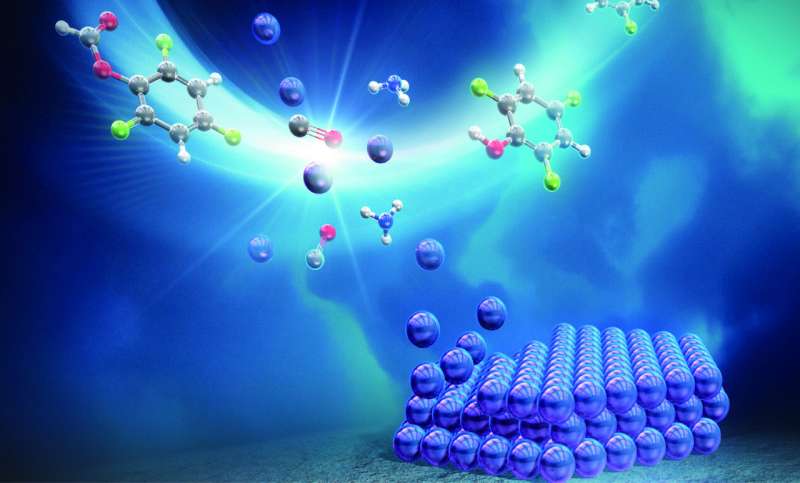This article has been reviewed according to Science X's editorial process and policies. Editors have highlighted the following attributes while ensuring the content's credibility:
fact-checked
peer-reviewed publication
trusted source
proofread
The 'one-pot' nanosheet method catalyzing a green energy revolution

A research group from the Institute for Future Materials and Systems at Nagoya University in Japan has developed a new 'one-pot' method to make nanosheets using less rare metals. Their discovery should allow for the energy-making process to be more eco-friendly. The journal ACS Nano published the study.
Producing clean energy is important because it helps reduce global warming and contributes to building a carbon-neutral society. A potential source of clean energy uses hydrogen catalysts, such as palladium (Pd). Industries use Pd in electrolysis to separate water into hydrogen and oxygen. Afterward, the hydrogen in fuel cells is used to create electricity. The only byproduct is water.
Pd is commonly used in a spherical 'nanoparticle' form for catalyst use. However, a flatter, thinner surface would use fewer precious metals and increase the available surface area for the reaction.
Minoru Osada at Nagoya University and his research group have developed a new way to make Pd nanosheets. They named it the 'one-pot method' because it can be done in a single glass bottle. The resulting sheets were so thin (1~2 nm) that they can be compared to the size of a single molecule or DNA strand.
According to Osada, "Our newly developed method is a safe, simple, and energy-saving process. Nanosheets can be synthesized at a low temperature of 75°C in a single hour with no special reaction vessel. Although the conventional synthesis method struggles to synthesize nanosheets with a uniform thickness and size, our one-pot method can easily do this."
These nanosheets offer great improvements over existing technology. "Our 2D nanosheets have 2.8 times more surface area than spherical nanoparticles because of their sheet-like shape," said Osada. "They had over twice the catalytic activity of the current generation of hydrogen evolution catalysts in performance tests."
Since hydrogen reactions are important for many industries, this research promises to have a transformative impact. Osada expressed hope that the new Pd nanosheets would be used not only in renewable energy but also in a wide range of industries.
"To date, Pd nanoparticles have been widely used as important catalysts for various chemical reactions ranging from gas purification to pharmaceutical synthesis. Pd nanosheets may potentially replace conventional Pd catalysts and revolutionize these processes."
More information: Sumiya Ando et al, Facile Synthesis of Pd Nanosheets and Implications for Superior Catalytic Activity, ACS Nano (2023). DOI: 10.1021/acsnano.3c07861
Journal information: ACS Nano
Provided by Nagoya University



















